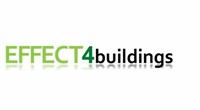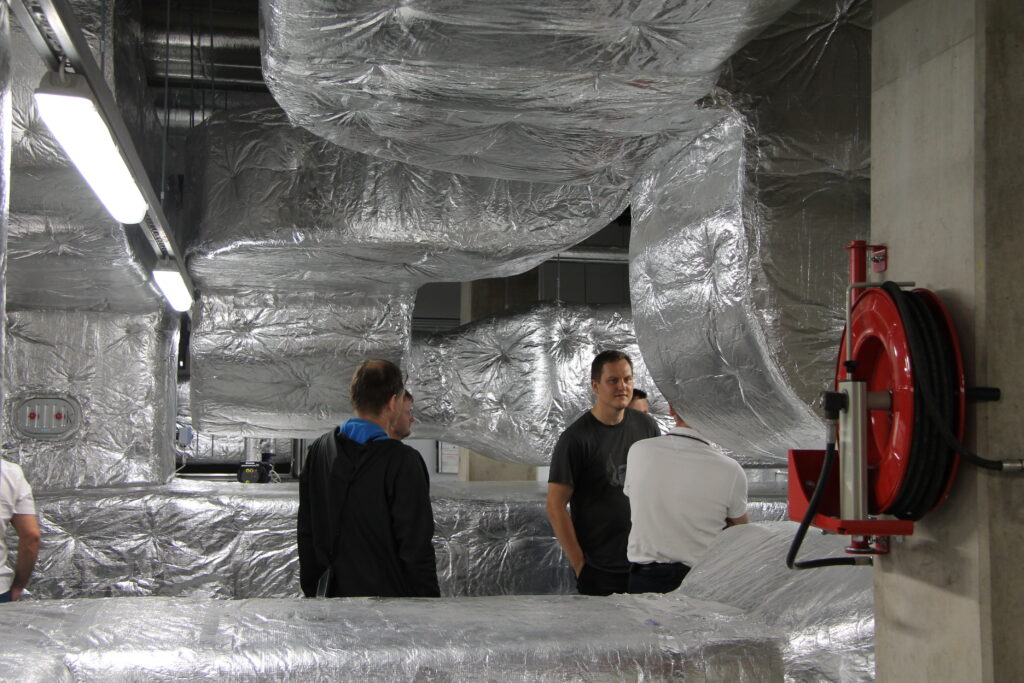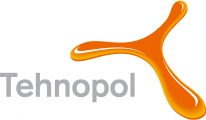This is a brief description of the development of ventilation solutions and pros and cons that can be associated with the different ventilation systems.
Natural ventilation
Natural ventilation is driven by the thermal forces that occur in the building. This is achieved when the indoor temperature is significantly higher than outside temperature. The supply air comes through window vents and exit through the chimney or similar. In summer the ventilation is almost non-existent as the temperature in- and outside is relatively balanced. For this system to work, heating is required with a boiler or stove that keeps the chimney warm, which contributes to the thermal force. Changing heating systems that do not contribute to chimney power for example district heating and heat pumps, it becomes difficult to maintain an acceptable air exchange that are needed in the building. Energy efficient renovations often result in making the buildings envelope more airtight for example new windows and insulation, this contributes to a deterioration of the ventilation and lead to poor indoor environment, condensation and mold.
Buildings with this type of ventilation are often poorly ventilated from the beginning. Switching to another system with better performance and with higher air exchange will likely increase the energy consumption for the building.
Benefits:
- Simple and inexpensive
- Quiet
- No mechanical parts
Cons:
- Need high thermal differential to operate
- Heat recovery of the exhaust air is not possible
- Difficult to regulate air flow
- Risk of back suction in ducts when using the kitchen fan
- Wind conditions affect the system
- Difficult to filter the outdoor air
- Energy losses
Exhaust air ventilation
Exhaust air has the same principle as natural ventilation. The difference is that a fan depressurizes the building instead of the thermal driving force. This makes it easier to control the air flow in the building. When implement mechanical exhaust ventilation in a building with natural ventilation, you can often use existing ducts. To get the right air flow in the building the ducts airtightness is important. The supply air vent normally has simple filters that have problems filtering out pollen and other particles, which can create problems with the indoor environment.
Benefits:
- Often easy to implement on existing natural ventilation systems
- The ventilation flow can be adjusted
- Possibility of simpler filters on the supply air
- Ddepressurizing the house minimizes the risk of moist intrusion on the inside of the building’s envelope.
- Can be combined with heat recovery systems.
- Simple and inexpensive system
Cons:
- No heat recovery
- Limitations in the system adjustment.
- Risk of draft from fresh air vents when the outdoor air is cold.
- Fan requires maintenance and uses electricity.
- Difficult to accurately filter the outdoor air
- Depressurizing the building can cause problems with stoves.
- Large energy losses
FTX – Balanced ventilation
Balanced ventilation with heat recovery provides a good control over the amount of fresh air delivered to the building. Supply air vents are placed in the living and sleeping areas and exhaust vents in the bathroom, toilet and laundry room. Balanced ventilation requires separate ducts for supply and exhaust air which can be space consuming. Supply air temperature is very close to the room temperature which gives comfortable air exchange and high comfort, with minimal risk of draft. Filter in the unit effectively removing impurities, dust and pollen that exist in the outdoor air. System Recycles about 80% of the energy from the exhaust air and use it to heat the supply air.
The buildings envelop airtightness are if great importance to ensure to maximize energy recovery from the exhaust air.
Benefits:
- Heat recovery.
- Easy to change filter
- Possibility to have better particle filter
- Works independently of weather conditions
- Easy to set operating times by activity
- Preheated Supply Air
- Reduces radon concentration in the building
Cons:
- Maintenance is required in the form of filter replacement and cleaning of ducts and heat exchangers.
- The system requires careful adjustment in order not to risk over pressurize the building.
- Fans use electricity.
- Expensive and complicated to assemble in existing multi-family homes
- Space consuming
- Envelop airtightness
Exhaust air heat pump
Heat pump extracts the energy in the exhaust air and adds it to the building’s heating system, which requires a waterborn heating system. Otherwise, the system works as a standard exhaust system.
Benefits:
- Energy can efficiently be recycled
- Great energy Savings
- See Exhaust air system
Cons:
- Complex components
- Risk of high primary energy use
- Needs Waterborne heating system
- See Exhaust air system
Text author: Benny Magnusson, Sustainable Building Cluster in Dalarna
Background: This article is made in the framework of the project Effective Financing Tools for implementing Energy Efficiency in Buildings (EFFECT4buildings). The aim of the article is to share of experiences on energy efficiency solutions. EFECT4buildings project develop a toolbox with a set of financial instruments for building managers to implement more energy efficiency measures. The project also maps, promote and share experiences among building managers of different technology solutions for energy efficiency in buildings. EFFECT4buildings is implemented with the support from the Interreg Baltic Sea Region Program 2014-2020 (European Regional Development Fund) and Norwegian national funding.
For more information: http://www.effect4buildings.se
Follow us on Twitter @EFFECT4building
Disclaimer: The sole responsibility for the content of this article lies with the authors. It does not represent the views of the European Union.













